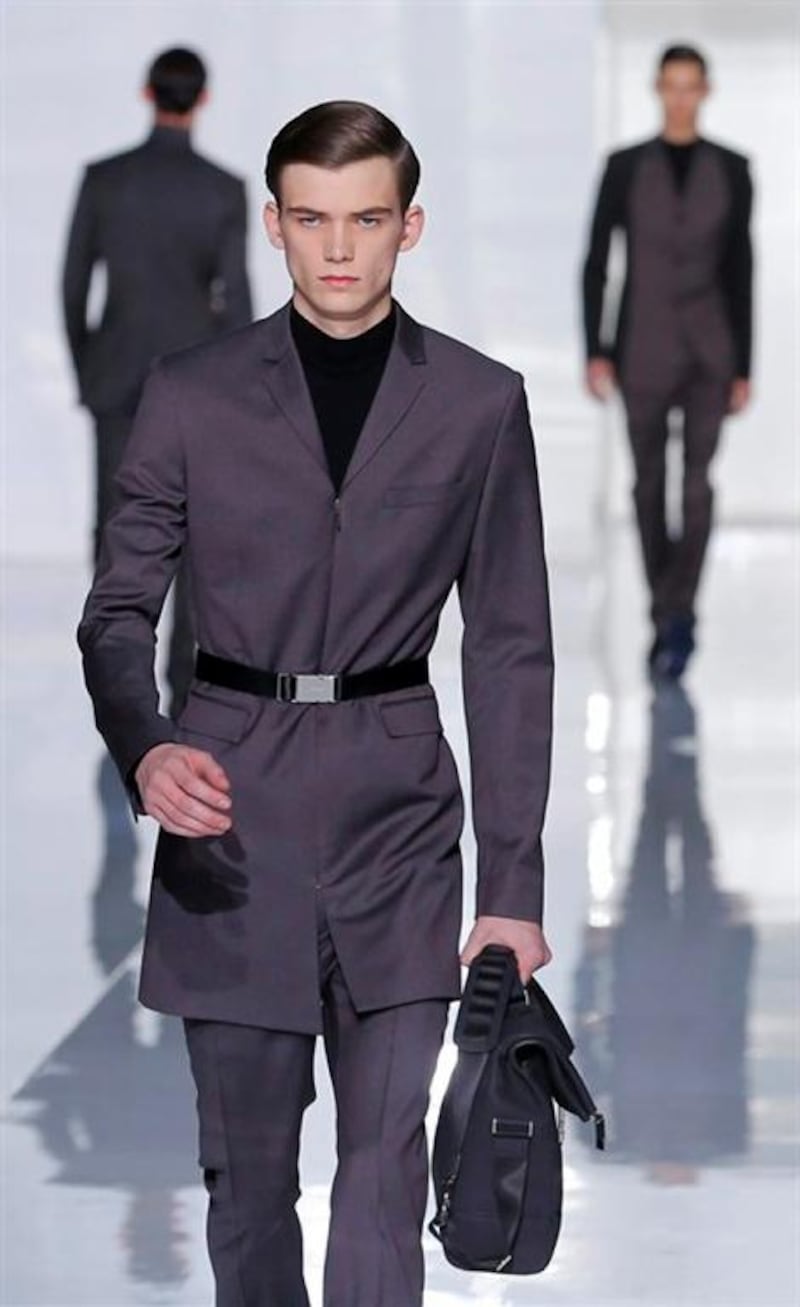They say that it’s the details in menswear that really count. Truth be told, grand statements are for the vanishingly small number of men who want to stand out, who think that being in fashion is more important than being stylish.
It’s an idea that, in 2013, many designers – brand giants with overheads and recessionary concerns especially – woke up to. The most readily adopted trend of spring/summer 2013, from the likes of Armani and Christopher Raeburn? The bomber jacket. And for those who wanted to go really radical: the baseball-style of the bomber jacket. It hardly quickens the pulse.
Shoes were classic, too – brogues, Oxfords – but this time around in suede, ready to be ruined by the season’s stylists’ preference for their catwalk models going sock-less, which made sense, for warmer climates at least, teamed with the continuing love of the ankle-skimming trouser, much to the horror of tailors.
Even colour, which the fashion world tries to revive for menswear every summer usually with limited success, was this time washed out. Muted pastels made many a shade sufficiently safe for the typical conservative male to approach, albeit in a 1980s way.
Only suiting, ironically perhaps given how most suits are worn in formally regulated settings, went for all-out, sunglasses-on dazzle. Paul Smith’s searing reddish-orange, single-button style was among the best.
Most would be more inclined to stick with the other key suit trend of the year, the very epitome of conservatism: the three-piece suit. Bank managers of the old school had never been more on-trend.
Whatever next? Tab-collar shirts? Men in fedoras? Well, yes. They were both favourites of the London Collections. Indeed, possibly the definitive trend of the year could be summed up as sartorialism: men manning-up in classic duds that would not have scared their granddaddies.
As far as the shock of the new went, the situation barely improved six months on, for autumn/winter, nor across the channel in Paris. Pattern was some of the biggest news, but, aside from its coming in blown-up proportions, remained essentially traditional. Even the likes of Raf Simons and Hedi Slimane, two of menswear’s progressives, stuck with enlarged madras, houndstooth or Prince of Wales checks. It was all so postmodern. There were nods to punk, too.
For this past wintry season, only a few of the capital D designer brands pushed the proverbial envelope. Dries van Noten borrowed a successful idea from womenswear of late to suggest wearing our pyjamas during the daytime could be one way ahead – you know how some men can’t be bothered to get dressed in the morning. While Dior Homme’s Kris Van Assche channelled sci-fi with the super-high-collared and high-waisted, Louis Vuitton thought lots of snow-leopard fur was the answer. Luxury still looks for success in excess.
But, if this all sounds like a complaint, it isn’t. The small things count, providing that the end result remains wearable, as so much of this year’s output was. It may also account for the year’s reappraisal of, and continuing appreciation, for so many clothing companies old and new renowned as makers of honest and solid products: Filson, Red Wing, Gitman, Alden et al; mostly American and in a workwear tradition. There’s a demand for the dapper, but also the dependable. The splashed cash is increasingly going on accessories – a wardrobe-reviving trick that women have long kept to themselves – or even on tech. Clothes, more and more, are what you wear to live in, not live through.
artslife@thenational.ae
Follow us @LifeNationalUAE
Follow us on Facebook for discussions, entertainment, reviews, wellness and news.





